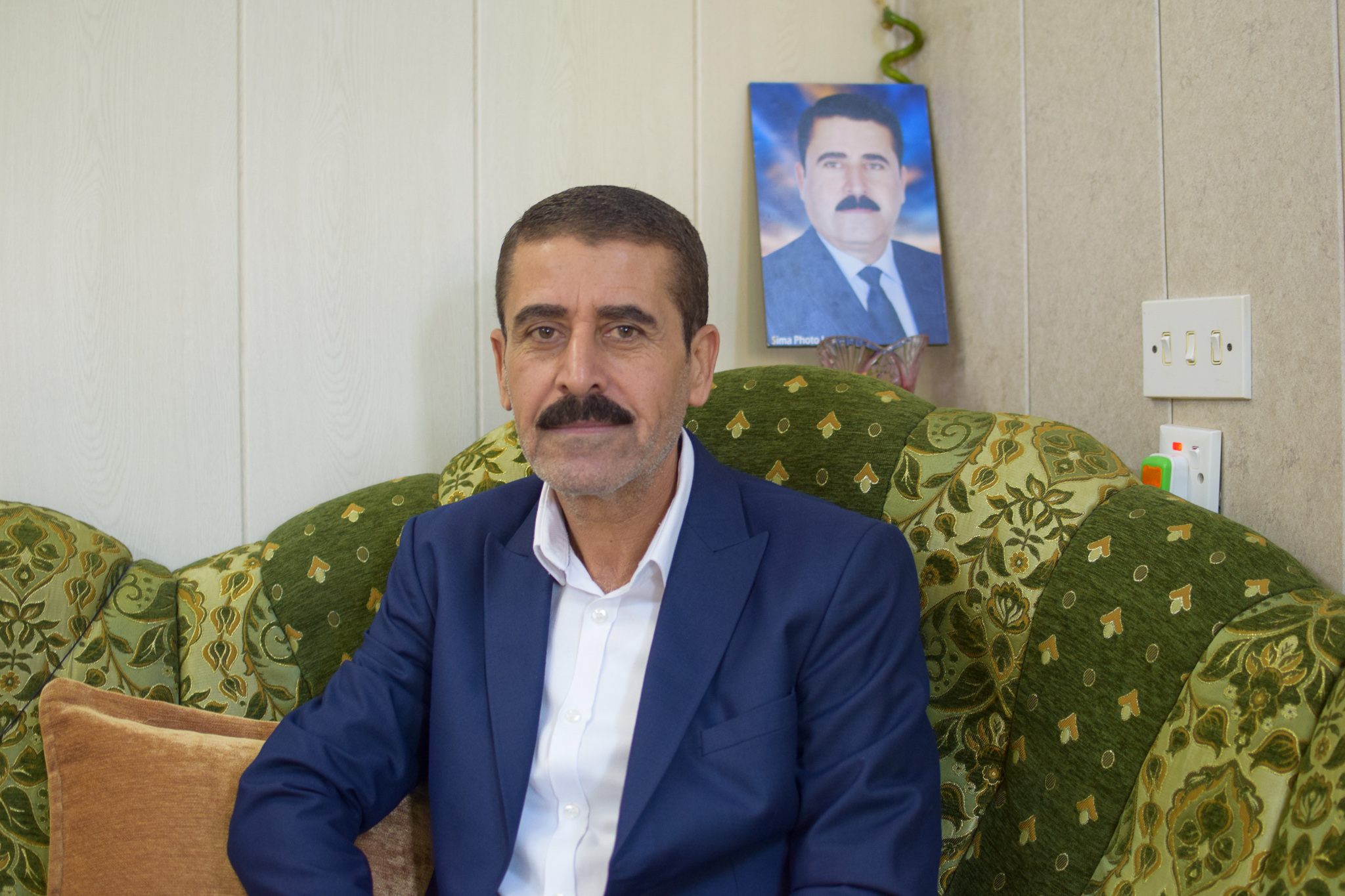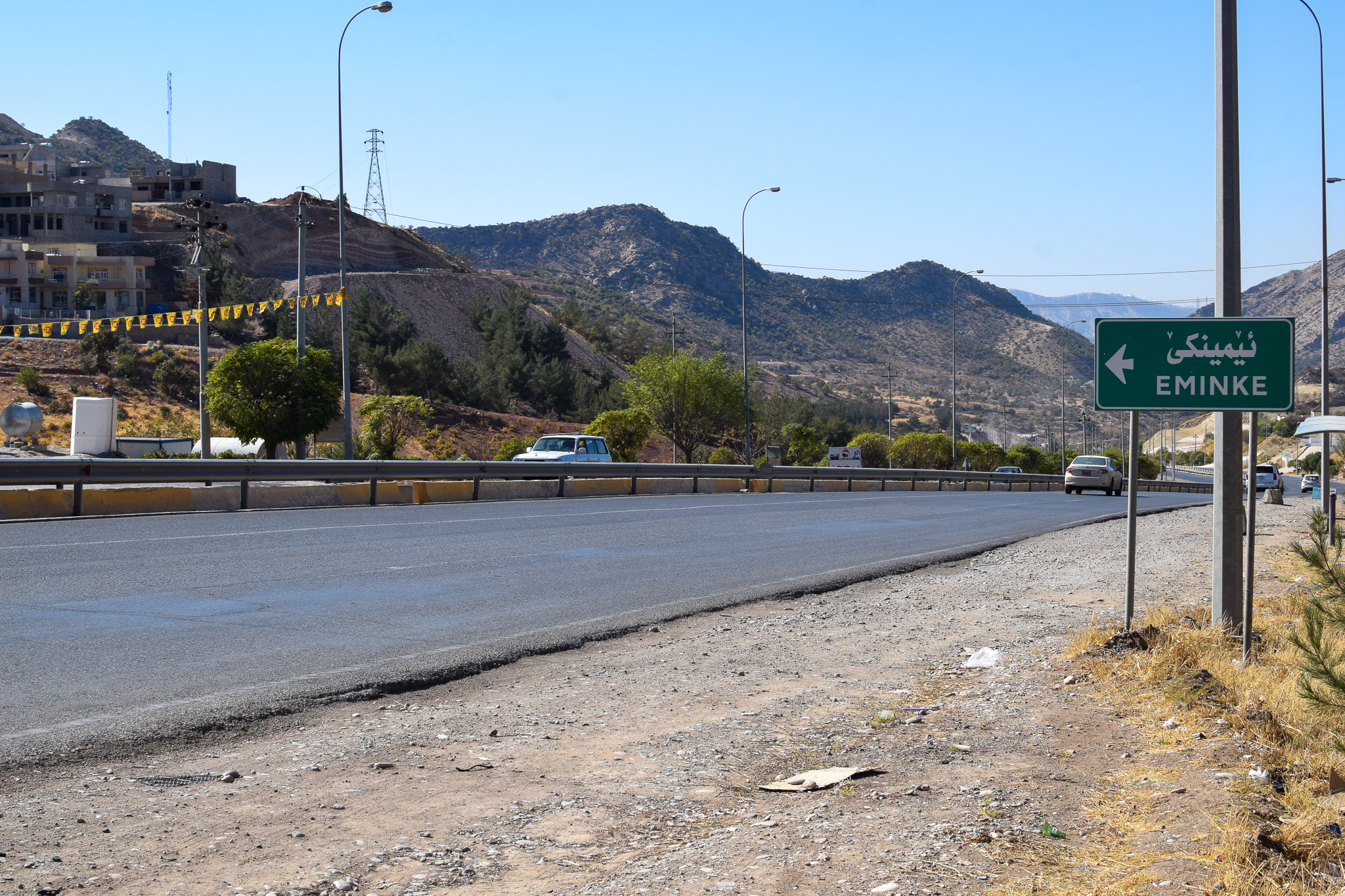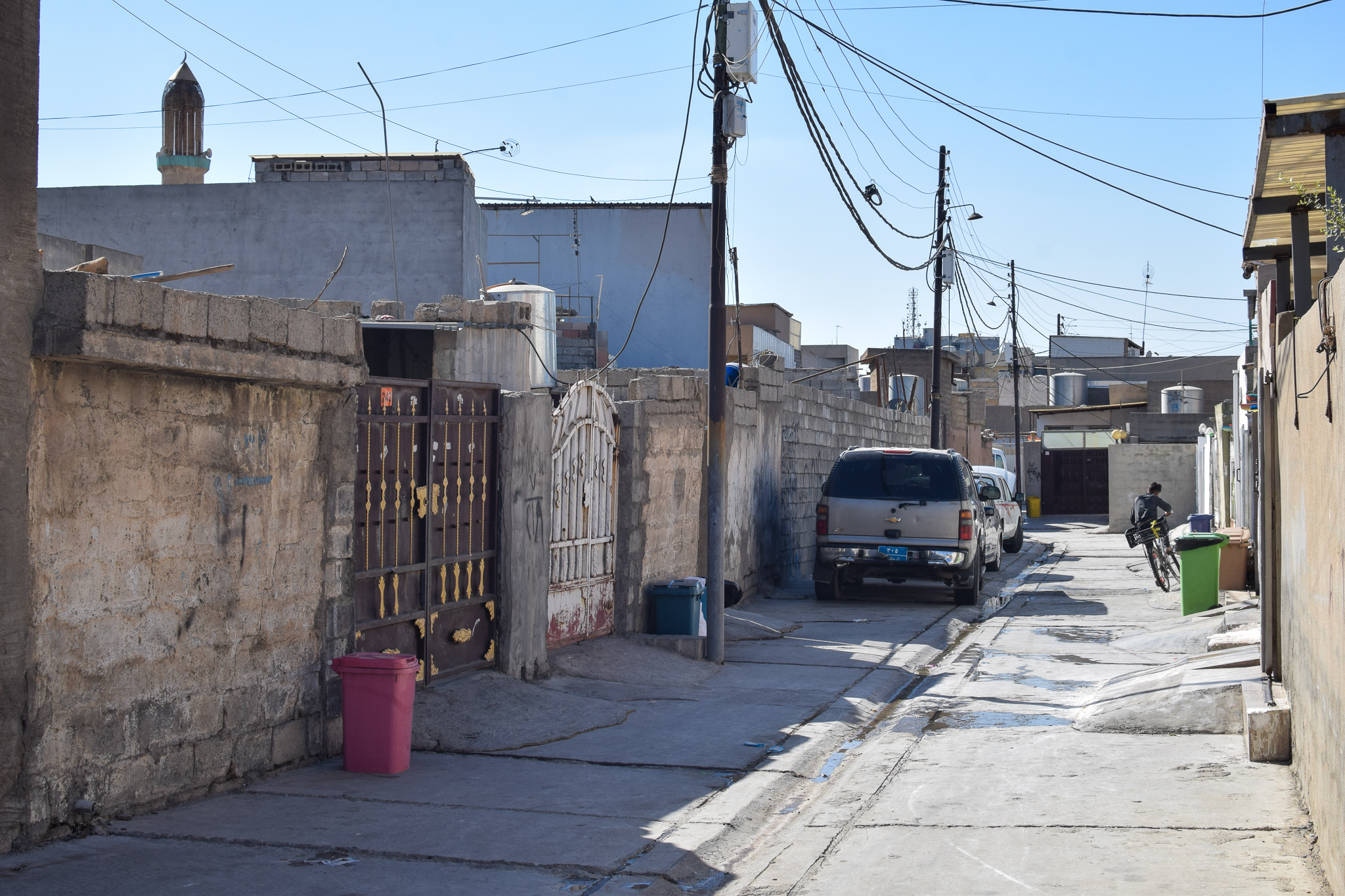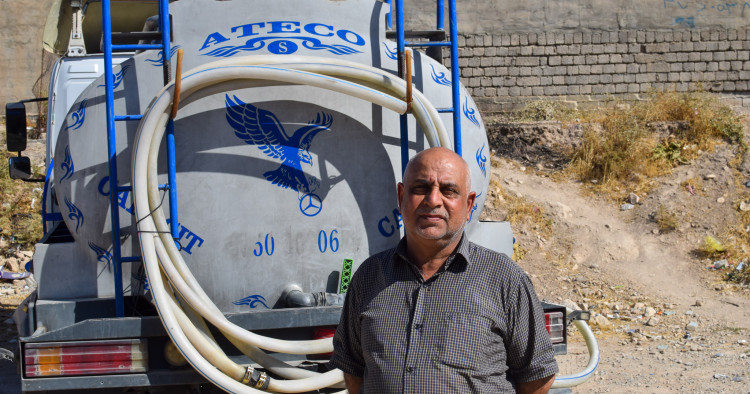Despite its reputation for relative political stability and economic prosperity compared with its neighbors, the Kurdistan Region of Iraq (KRI) frequently experiences protests, driven by popular anger over the government’s unreliable provision of public services, especially water, electricity, and roads. These protests point to simmering dissatisfaction with governance in the KRI across broad swathes of the population. Although uncoordinated and localized at present, these protests have the potential to develop into a potent political force if they become better organized.
On Oct. 6, 2021, residents in the Sulaymaniyah governorate’s Tanjaro subdistrict blocked an important road leading south to the Garmian administration and federally controlled Iraq, complaining that the road was in poor condition, destroyed by trucks serving local factories, and that the government had failed to repair it despite promising to do so many times. As traffic on the Qaradagh-Sulaymaniyah Road backed up into the distance, protesters aired their grievances not to any officials who came to hear them out, but to a handful of reporters covering the demonstration.
“When you protest, it means that you are at the utmost level of hopelessness and desperation,” one of the villagers who helped organize the protest, Wasta Mushtaq, said in an interview later that month. A retired member of the Kurdish armed forces known as the Peshmerga, Mushtaq lives in the nearby 340-house village of Alliawa Khwaru and works as an auto mechanic in Sulaymaniyah city.
The main road was built in the 1970s by the Ba’athist regime and has not been repaired in years despite seeing heavy traffic. Its surface is rutted and broken, forcing vehicles to slow to a crawl in order to avoid obstacles and prevent damage, even in perfect weather. To get to Mushtaq’s village, drivers must take a half-mile dirt road that rain routinely renders impassable during the winter. The road remains unpaved, even after years of meetings to petition officials.
“The only reason that [infrastructure improvements] have not been implemented is that no one has power in this village,” said Swara Mahmood, a staff member at a local university who lives in Alliawa Khwaru, noting that all of the bridges, schools, mosques, and the small clinic in the village were built by the residents themselves, tired of empty promises from the government and the locally powerful Patriotic Union of Kurdistan (PUK). Despite being only a few miles away from the second-largest city in the KRI, drinking water is supplied by tanker trucks at the villagers’ expense rather than by pipes and electricity is spotty and subject to blackouts, especially in the summer and winter months.
This situation is all too common across the KRI and the anger and frustration felt by residents routinely spills out in the form of localized, short-duration demonstrations like the one in Tanjaro. These protests only occasionally make the news and, if they do, are only covered by certain Kurdish-language media outlets, including the opposition-oriented channel NRT. (Full disclosure: I am a Senior Editor at NRT). More often than not, the government relies on local figures from the ruling parties, either the PUK or the Kurdistan Democratic Party (KDP) depending on the area, to smooth over the issue or will adopt a short-term fix, placating residents until the same problem occurs later. As a result, localized popular protests rarely register as serious incidents for policymakers or foreign observers.
This paper will argue, however, that these protests constitute a coherent political phenomenon that speaks to a wider frustration with governance in the KRI and brings into focus the everyday, lived experience of the public beyond the slick marketing about the Kurdistan Region pushed by elites. Along with grievances related to unemployment, public sector pay cuts, and restrictions on civil rights, frustration with a lack of basic and reliable infrastructure continues to build up in the Kurdistan Region, creating a layer of tinder underlying politics and society that is waiting to catch fire. These protests demand practical and moral consideration, both of which must be addressed if a prosperous, democratic society is to flourish.

What are the protests about and what do they look like?
Prominent activist and teacher Badal Barwari, who was interviewed for this paper just days after being released from 14 months in prison for organizing protests in Duhok governorate, said that public services were of major importance for both residents and the proper functioning of the economy and society.
“In any country and city, roads are very essential, as [they are] a way for people to move and improve and to work. And there is no life without water, water is life. Electricity is used every day, particularly for work,” Barwari said, addressing why generally apolitical people would participate in these protests. Similarly, journalist Rebin Fatah said in an interview that the protesters now “include people from all classes and professions and all ages,” and that women and even people affiliated with the KDP and the PUK participate in these demonstrations in greater numbers than in the past.
Beyond their common origin as a reaction to poor service provision, these protests also share a number of other hallmarks, including that they most often occur in peripheral areas, like provincial towns, smaller villages, and outlying and low-income neighborhoods in the larger cities, and are of short duration, usually lasting from just a few hours to at most two days.
The protests typically attract between several dozen and several hundred participants, who employ tactics like blocking roads or demonstrating outside local government or party offices. The protests can reoccur in the same areas, but there is little coordination of effort or timing to increase their impact. There is no formal or informal coordinating leadership via civil society or institutions like labor unions. They are usually organized by neighbors reaching out to each other in person, by phone, or over social media. Local media is often alerted beforehand, but coverage is subject to political considerations.
Take two other recent examples. Numerous neighborhoods in Erbil city, the capital of the Kurdistan Region, were without water for extended periods this spring and summer, including Badawa, where local resident Farida Sami said that water shortages had occurred for the last three summers. “Lack of water was really difficult. We would leave for weeks,” she said. On Aug. 11, protesters from the neighborhood spilled out onto the adjacent “100-Meter” Road, which is a major ring road in the city, and tied up traffic for two hours in an effort to force the government to listen to them. Though the security forces did not interfere with the protesters, members of the Erbil Asayish wearing plainclothes attacked a reporting team from NRT in an effort to prevent coverage of the demonstration, interrupting their broadcast and seizing their equipment. The Asayish is a powerful branch of the security forces that focuses on political and counterterrorism issues; its units are closely affiliated with either the KDP or the PUK in the parties’ areas of control and are often deployed to protect their interests.
Similarly, protesters from Eminke village blocked a major highway between Duhok city and Amedi for three hours on Sept. 3 because their homes had been without water for two months during the sweltering summer. Although the water shortage was the proximate cause of the protests, village residents interviewed the following month said that poor quality of roads, unreliability of electricity, and the lack of local schools and hospitals contributed to their decision to protest. Again, the security forces did not attempt to disperse the protest and NRT and several other outlets covered it live. Rebar Eminke, a teacher who helped organize the demonstration, said in an interview that the media coverage was critical, not only in publicizing the protesters’ demands, but also in deterring the security forces from attacking protesters.
After both protests, local conditions improved somewhat, suggesting that the government and ruling parties have the capacity to resolve public service problems, but lack the will to do so unless pushed in ways that embarrass them publicly. Nevertheless, residents in both places said they were left largely unsatisfied. “I don’t know if the government had closed it deliberately,” Sami said, referring to the water supply to the neighborhood, adding that some alleys in the neighborhood still received less water than other streets. In Eminke, driver Eslam Muhammed said that one of Eminke’s two broken wells was fixed after the protest, but that the other one is still broken and that the area’s other problems remain unaddressed.
The recent protests in Tanjaro, Eminke, and Badawa are just a few examples of a much larger phenomenon. According to the ACLED dataset for Iraq, there were at least 355 protests and riots in Duhok, Erbil, and Sulaymaniyah governorates since the beginning of July 2019, when the current executive in the Kurdistan Regional Government (KRG) took office.1 Excluding other varieties of protests in the Kurdistan Region, including student protests, anti-Turkey and pro-Kurdistan Workers’ Party (PKK) demonstrations, and strikes by teachers and public servants over pay, along with all events that occurred during the Dec. 2-11, 2020 protest wave in Sulaymaniyah, there were at least 58 events that meet the criteria for public service protests or 16.3% of the total. In the dataset, 20 of the protests (34% of the total) took place in Erbil, 4 in Duhok (7%), and 32 in Sulaymaniyah (55%).
A major limitation of the ACLED data is that the group’s researchers use media reports as a primary source for identifying events for inclusion. The protests described here are never covered by international media and are mostly ignored by journalists from local outlets affiliated with the KDP and the PUK because covering them would diminish the political reputations of their patrons. Of the 58 protests identified in the dataset, 49 of them (84%) were sourced from reports by NRT or pro-PKK RojNews, with the remainder coming largely from KDP-affiliated Rudaw or Iraqi-Arab channels. The short duration and hard-to-reach location of the protests also limits journalists’ capacity to cover them. Therefore, the dataset serves as a baseline or minimum approximation. In reality, there are many more protests of this variety that can be accounted for anecdotally.
Another factor to consider is the major crackdown on public criticism of authorities launched by the KDP in Duhok and Erbil during 2020, which included the arrest and imprisonment of Barwari and dozens of others. Protests of all kinds were forcefully discouraged, protest organizers rounded up, and online speech was tracked and policed. Journalists were arrested and NRT’s Duhok office was shuttered by police from Aug. 20 until Dec. 24. This could account for the low number of protests in Duhok in the ACLED dataset. However, the dataset does not include the events of the December 2020 protest wave in Sulaymaniyah, which were excluded for clarity’s sake given their number and scale, although frustrations related to lack of public services were certainly voiced by demonstrators.

Do public service protests have an impact?
At their heart, these public service protests are citizens expressing their desire for a better quality of life and a more responsive government, goals that are essential to democratic societies. All of the protesters who were interviewed for this paper said that members of their communities had previously tried other avenues to find a solution to the problem of the lack of services, but did not see results, which contributed to their decision to protest.
Nevertheless, it is also clear that these protests have a limited effect in resolving the public service issues in a fundamental or systemic way across the Kurdistan Region. Speaking with protesters and analysts, several reasons emerge to explain this, including: lack of action from the authorities to address the issue, lack of coordination between protesters in different areas or across issues, and the lack of an effective political opposition.
Mera Jasm Bakr, a non-resident fellow at the Konrad Adenauer Foundation, said that the protests have not been successful at prodding the KRG to improve public services in part because doing so would demand radical policy changes and huge investments in infrastructure that are “outside the scope of vision” of the authorities in the Kurdistan Region, who are unwilling and, in some ways, unable to take on the challenge. Because of this, Bakr predicted that the government and ruling parties will not engage on the issue of public services unless the protests grow bigger.
Rebin Fatah also saw a disengagement from the KRG and the ruling parties on the issue, arguing that the authorities in the Kurdistan Region feel that their legitimacy is derived from foreign partners rather than the people, which insulates them from domestic demands. “In fact, they do not care about the people because they see their existence in terms of continuing foreign relations with regional countries. They think that the support of these countries guarantees their [remaining in power],” he said.
Despite its significant natural resource wealth, the KRG’s financial struggles are well documented and they contribute to the lack of investment in infrastructure, but these points speak to a larger moral problem about the place of citizens in the governance of the Kurdistan Region. That vocal and repeated demands for things that many people outside the Kurdistan Region take for granted, like access to roads, water, and reliable electricity, can be ignored over periods of years indicates a major disconnect between those in power and those they govern.
The leadership of the KDP, run by the Barzani family, and the PUK, dominated by the Talabani family, are increasingly divorced from the lived experience of the public, affecting their decision-making process. From a practical point of view, the frequency of protests suggests that traditional systems for resolving grievances in the KRI, where problems are addressed through informal arbitration by local party figures, are no longer functioning as they once did, at least from the perspective of the aggrieved, and that there is growing dissatisfaction with the ruling families.
Several of the protesters said that they had seen media coverage of similar public service protests in other parts of the Kurdistan Region either on TV or on social media, but when they organized their own demonstrations, they only worked with their immediate neighbors and did not consider reaching out to coordinate with others for greater impact.
“Each time people protest correctly, there is a great effect. … For any work, if the people of Kurdistan do this activity, it will have its effect,” said Barwari, the activist from Duhok who was recently released from prison, but he acknowledged that there is not a “culture of protesting” in the Kurdistan Region and that it is hard to organize large protests and sustain them over time.
For Kamal Chomani, a policy analyst and graduate student at the Willy Brandt School for Public Policy at Erfurt University in Germany, the lack of coordination is a major reason why these protests “go nowhere.” Contrasting the situation with the Arab Spring and the Tishreen protests in Iraq, he said that protests in Kurdistan are localized and that there is no solidarity across issue areas, between groups like those angry about public services and students or public servants protesting about pay issues. Moreover, he said that there is no central leadership group “that will decide, organize, mobilize. For the political parties, that makes it easy to divide [protesters].”
There was broad agreement among the analysts interviewed for this paper that there is little hope in their current formation for protests to grow larger, especially if grievances are not effectively harnessed by a political party. However, party support seems remote for the time being because formal opposition parties in the Kurdistan Region are either small in comparison to the ruling ones, like the New Generation Movement, or have been abandoned entirely by the public, as voters did with the Gorran Movement in the 2021 Iraqi parliamentary election.
“If you’re not happy with the political situation, you’ve got to ask yourself in which institutional framework can you bring about change,” said Dastan Jasim, a doctoral fellow at the German Institute for Global and Area Studies. “There is neither a parliamentary opposition in the Kurdistan Region nor is there a strong force against the KDP. People are holding on to the more issue-based stuff, hoping that that can be dealt with more efficiently.”
“The ruling parties would never tolerate any political formation around these protests. As we see, the security forces have been relatively soft towards these protests and tend not to prevent or end them by force,” said journalist Renwar Najm, adding that more force would likely be used if the demonstrations grew larger or more organized.

What can be done?
For international actors, approaching this issue is tricky because the ideal solution is to locate the citizen at the heart of the governance structure in the KRI and prioritize their needs, but only the local parties can do this. Throwing aid money at infrastructure construction would paper over that problem and entrench and empower those groups responsible for poor governance in the first place, while exacerbating issues like dependence on foreign aid. With that in mind, however, it is unconscionable to deny electricity and water to people on these bases and international actors should do more to improve service provision in the KRI through the means available to them. To that end, two practical steps that can be taken by the international community are: 1) to pay greater attention to grievances related to public services in order to better understand the political dynamics in the KRI beyond the elite and to anticipate probable sources of destabilization, and 2) to reorient aid and economic development budgets and agendas to prioritize and responsibly encourage infrastructure improvements, with a special focus on rural and low-income areas to raise basic standards of living. Corruption is an endemic problem in the KRI emanating from the highest levels of political authority, so international actors must be extremely cautious to act in ways that do not reinforce or reward anti-democratic behavior.
In the Kurdistan Region, localized and uncoordinated protests motivated by poor public services constitute a coherent political phenomenon that speaks to serious governance problems. Thinking strategically, this unrest demands practical action, such as the KRG actually addressing protesters’ demands in substantive ways and engaging with citizens to center their concerns on the political agenda. In their current form, the protests have limited impact because of inaction on the part of the authorities, lack of coordination or leadership, and ineffective opposition parties. Nevertheless, there is great potential energy below the surface that, if combined with other factors, could prove socially and politically destabilizing. The authorities in the Kurdistan Region and their foreign partners should take these protests seriously or risk being caught off guard by opposition later. As Swara Mahmood, the protester in Tanjaro, said, “The solution is for us to continue and see when the government will take action.”
Winthrop Rodgers is a Senior Editor at NRT English, where he has worked for the last three years covering politics, economics, security, and press freedom in Iraq and the Kurdistan Region. The views expressed here are his own.
Author’s note: I am grateful to Kazhan Mahmood for her help with interpretation and translations. Special thanks also to Murad Surchy in Erbil and Taeif Goran in Duhok.
All photos are courtesy of the author.
Endnote
1. Raleigh, Clionadh, Andrew Linke, Håvard Hegre and Joakim Karlsen. (2010). “Introducing ACLED-Armed Conflict Location and Event Data.” Journal of Peace Research 47(5) 651-660."
The Middle East Institute (MEI) is an independent, non-partisan, non-for-profit, educational organization. It does not engage in advocacy and its scholars’ opinions are their own. MEI welcomes financial donations, but retains sole editorial control over its work and its publications reflect only the authors’ views. For a listing of MEI donors, please click here.













